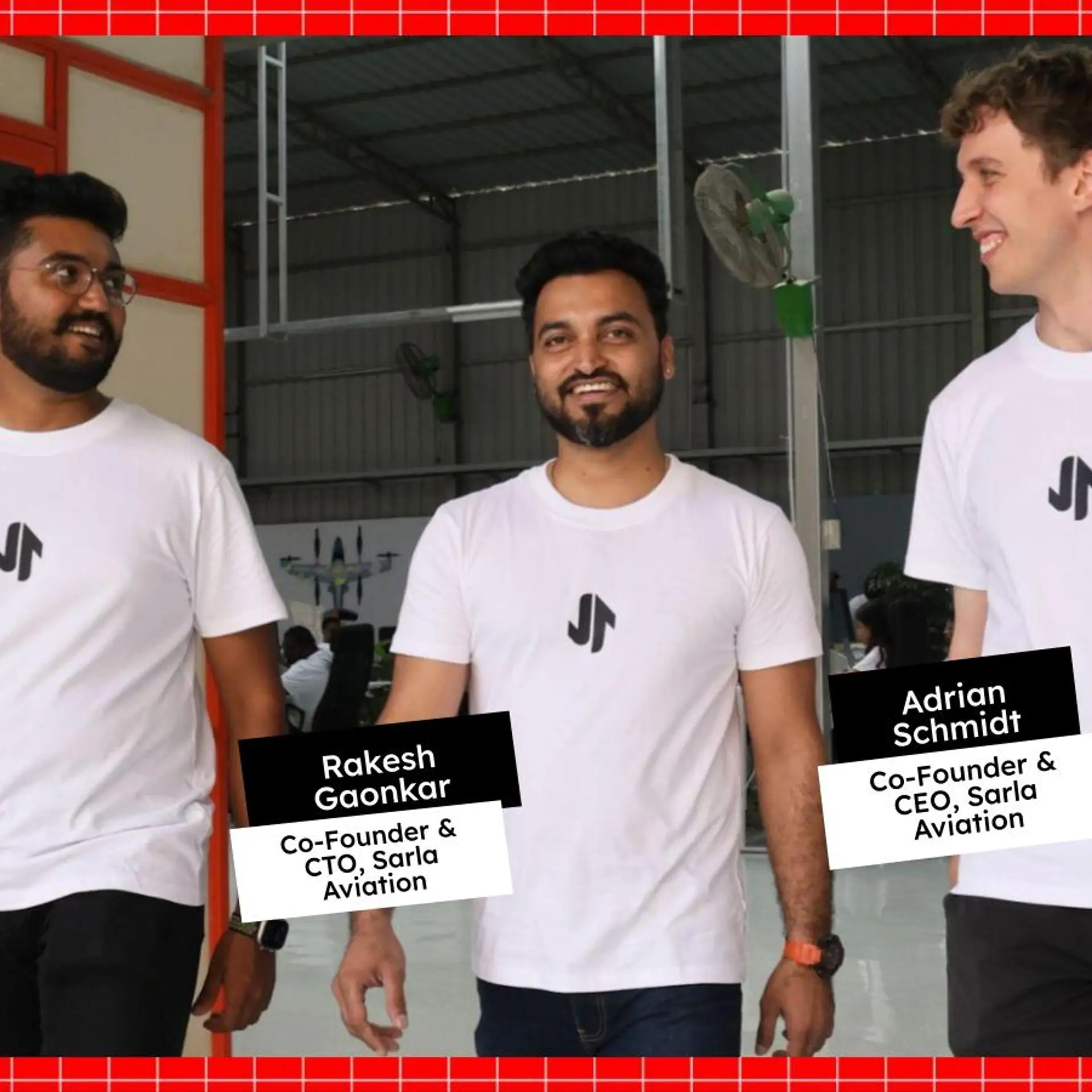[Behind the Scenes] How Pepperfry gets your favourite couch at your doorstep
In an app-ridden world, getting anything from a ride to a safety pin on demand is second nature. Yet, it’s the ‘behind the scenes’ of apps that seamlessly creates synergy. ‘Behind the Scenes’ is YourStory's journey into understanding the precision with which all these dynamics work together.
In the latest series, YourStory goes ‘Behind the Scenes’ to understand the workings of some of the most intriguing tech startups in the Indian ecosystem. In this edition, Pepperfry - the online furniture startup welcomes us into its new warehouse in Bengaluru. We get a front row seat into the supply chain of this eight-year-old startup that helps you get that favourite couch to sink into in just a few clicks.
“You cannot change the doors, windows or tiles. But you can make comfortable nooks inside and give a character to the house using furniture. Your personal touch converts a house into your home,” says Ambareesh Murty, Co-founder and CEO, Pepperfry, on starting an online furniture store in 2011.

Ashish Shah, Co-founder, Pepperfry
A company that initially started out as a horizontal online marketplace focusing on fashion and lifestyle, in 2013, pivoted to an online furniture marketplace. Today, it’s a leader in that space which has since grown its stack.
Clearly, Ambareesh had his sights on the future when they sat together to form the company. With many a challenge thrown at them, almost derailing them, they made furniture shopping online as simple as ordering a cappuccino at a cafe. Different sellers, warehouses, supply chain management and a seamless working is what Pepperfry has come to signify.
Building a managed marketplace
Pepperfry was one of the first ecommerce platforms focussed on selling furniture online. Today, it is a leader among online furniture players, and it recently opened its second warehouse in a 1,85,000 sq ft (roughly the size of six football fields) warehouse facility in Bengaluru. The first was near Bhiwandi in Mumbai - a larger facility with a covered area 2,85,000 sq ft.
“Being a managed marketplace, we control and manage the entire experience, unlike a pure marketplace. The entire responsibility of identifying the items to cataloguing the products to delivery and support falls on the marketplace,” says Ashish Shah, Co-founder Pepperfry.
A walk through the warehouse sees the Pepperfry team in seamless action as the entire process is streamlined. From boxing furniture, cataloguing, transport into different bays, the warehouse manages every single aspect.
So how does this online store work?
The category team comprising around 80 people who meet sellers, check and curate products that you see displayed on the platform. After curated and selected products are procured from sellers, they are taken to studios for photoshoots, and the shot products are catalogued and placed on a website.
Once the product is sold, it is packed and brought to the Pepperfry warehouse, where it is first tested for quality, repacked, and then it’s on its way to make some furniture seeker happy. This, Ashish explains, gives them the liberty to bring any seller online, as they don’t need to be technically savvy. They just must build great products.
Pepperfry works on getting new collections out between January and June, every year. According to Ashish, 60 percent of their sales take place after June. Added to this, to be relevant in the online space, Pepperfry churns inventory every three months.
“We have four large sourcing centres in the country - a centre in Jodhpur, where sellers from the Rajasthan belt work with us. Delhi - for the trading community while Mumbai is for the western belt and Bengaluru caters to the southern belt. The sourcing centre works as a hub that keeps products from the city and within a 200 kilometres radius,” says Ashish.
Managing logistics
Pepperfry also works as a gatekeeper Sellers who aren’t present within the 200 km radius of the central hub cannot place their product on the platform. But a user has no restriction.
The team currently works with over 10,000 sellers, out of which 3,500 sellers get orders every month.
The products stocked at different sourcing centres are moved to smaller distribution centres from where they are shipped to individual consumers.
If a person in Pune orders a product from the Mumbai sourcing centre, the product is moved to a distribution centre and then shipped to the consumer. The distribution centres are between 5,000 sq ft to 15,000 sq ft in area. Pepperfry has over 22 distribution centres present in most capital cities, and it also works across 500 cities.
In terms of logistics, Ashish explains, “Suppose a product order is placed from Kochi, the platform checks which of the four sourcing centres has the product. A truck moving between these sourcing centres everyday keeps a check on the stock for each of these centres.” The frequency between Mumbai to Bengaluru is much higher. The products are picked from sourcing centres once in two days and distributed across different cities.
Routing and tech
Apart from the main routes, Pepperfry sends its trucks on certain common routes as well - one traverses from Chennai to Madurai or Coimbatore, irrespective of volumes. This enables them to cater to many more cities.
As of today, Pepperfry owns 370 trucks, has close to 1,000 delivery executives and 250 carpenters working on assembly.
“Today, we send trucks from Mumbai to Chennai directly, but two years ago, the products would come from Mumbai to Bengaluru and then go to Chennai because the volumes were different. Over time, you increase the container size, now while the cost of the container goes up, the ability to store products in the containers goes up by 40 percent. This, in turn, reduces the fulfilment cost, and timelines,” says Ashish.
While the supply and operations are busy, the tech team’s work begins before an individual places an order. Their work starts with ensuring the cataloguing information is thorough.
“It is about ensuring that every piece of information and data is updated into the system. Apart from that, the algorithms need to identify each part, and connect with warehouses and central distribution centres,” says Sanjay Netrabile, CTO, Pepperfry.
The systems and algorithms begin by geotagging the location from where orders are placed, which in turn are linked to the selected warehouse and distribution centre. The stocks too are determined and updated at the central CRM, which in turn gets updated for the end consumer. The geotagging also works on couponing for different products at different locations.
However, one of the nuances that the Pepperfry team must work around are damages. Ashish says that in the initial stages, they had a 17 percent damage rate which has now reduced to 1.5 percent. This, he says, is primarily because they have been able to manage the supply chain.
“When you have multiple touch points, the tendency for a product to get damaged is higher as there are multiple pickup points,” says Ashish.
Today, Pepperfry claims to be the largest B2C distribution company in the country, yet it has seen its fair share of ups and downs. Both Ashish and Ambareesh have come a long way from their earlier career stint at eBay.
At one point in 2013, their funding had dried out. Ambareesh fondly remembers how 15 people in the top management decided to take a 50 percent salary cut indefinitely so that they could retrench those at the junior level, and not lay off anyone. All those 15 people are still with Pepperfry.
Today, Pepperfry has overcome those starting troubles. It is one of the leading players in the market and has raised $200 million. It provides its customers with a wide selection of furniture and home products.
South India accounts for up to 45 percent of Pepperfry’s sales, with Bengaluru itself contributing to 30 percent. Mumbai and Delhi-NCR stand at 20 and 24 percent, and the rest of the orders come from the east.
According to the RoC data shared by the company, Pepperfry’s revenue of in 2015 is Rs 2.53 crore in 2016, it was Rs 9.82 crore in 2017 the revenue were at Rs 127.55 crore, in 2018 at Rs 140.60 crore. Pepperfry founders believe that if you think you have the right strategy, you should not change it.
“Everyone has a point of view, on the name, catalogue, and business model. But you’re the closest to your business,” says Ambareesh.
(Edited by Suruchi Kapur Gomes)


![[Behind the Scenes] How Pepperfry gets your favourite couch at your doorstep](https://images.yourstory.com/cs/2/a9efa9c02dd911e9adc52d913c55075e/pepperfry1571748677803png?mode=crop&crop=faces&ar=2%3A1&format=auto&w=1920&q=75)
![[Behind the scenes] Into the nuts and bolts of Yulu, the dockless bike-sharing platform that of...](https://images.yourstory.com/cs/2/a9efa9c0-2dd9-11e9-adc5-2d913c55075e/YULU-Featured-Image_YourStory1568108541548.png?fm=png&auto=format&h=100&w=100&crop=entropy&fit=crop)
![[The Turning Point] The personal touches that make a house a home: story of Pepperfry](https://images.yourstory.com/cs/2/3fb20ae0-2dc9-11e9-af58-c17e6cc3d915/Ambareesh-Murty-Founder-and-CEO-Pepperfry1567248198315.png?fm=png&auto=format&h=100&w=100&crop=entropy&fit=crop)






